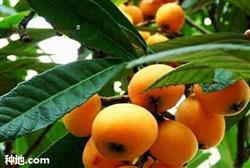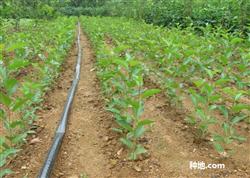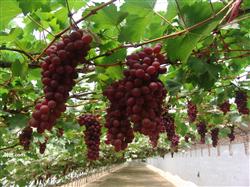How to fertilize loquat trees for high yield

How to fertilize loquat trees for high yield? Key points of fertilization for loquat trees: nitrogen is one of the most needed elements for loquat growth. The application of nitrogen fertilizer can enhance the tree potential, delay the flowering period, and have a certain effect on anti-freezing. When the nitrogen is sufficient, the tree is strong, the branches and leaves are large, the number of flowers is moderate, the fruit is large and the yield is high. When there is too much nitrogen, the shoot grows, and the fruit is large, but the color and taste are light, and the flesh is hard. When nitrogen is insufficient, the growth is weak, the branches are small and thin, the leaves are small and thin, the old leaves fall off early, and the fruit yield is low. A large amount of phosphorus exists in the reproductive organs of loquat. Phosphorus application can increase fruit setting rate, promote root growth and increase fruit sugar content. The root growth of phosphorus-deficient loquat was poor, the leaves were small, dark green, and the growth was weak. Potassium is abundant in fruits, and the content of potassium in leaves and shoots is also high. The application of potassium fertilizer plays a significant role in promoting fruit hypertrophy and improving product quality. Potassium can also promote branch enrichment and improve disease resistance. Calcium is the most abundant element in loquat. Calcium can regulate the acidity and alkalinity of the tree. Loquat trees are vigorous and vigorous in calcium-rich soil. When calcium deficiency occurs, loquat buds turn brown and die. Magnesium is a component of chlorophyll. when magnesium is deficient, the veins of leaves become green, the leaves turn yellow and fall off early. From the loquat plant as a whole, calcium content accounted for 0.71% of dry matter weight, potassium accounted for 0.53%, nitrogen accounted for 0.39%, magnesium accounted for 0.10%, and phosphorus accounted for 0.06%. Besides nitrogen, there are calcium, magnesium, potassium, sodium, phosphorus, iron, manganese, zinc and boron in loquat pulp, in which iron is the most, 126-700 mg / 100g, potassium is the second, 210 mg / 100g. Analysis of normal loquat leaves, nitrogen 1.35%, phosphorus 0.09%, potassium 0.4%, calcium 0.16%, magnesium 0.05%, if which element is lower than the above content, it shows that loquat lacks this element. Therefore, leaf analysis can be used as a basis for loquat application. Click to see more loquat planting techniques click to see more fruit planting techniques
- Prev

When will the big cherry be watered?
What should we pay attention to when planting big cherry seedlings? Planting big cherry seedlings should pay attention to the following points: first, temperature big cherry is a temperature-loving but not cold-tolerant fruit tree, suitable for local cultivation with an annual average temperature of 10 to 12 degrees Celsius. Abnormal temperature refers to the high and low temperatures in the suitable temperature range of big cherries. Under normal circumstances, high.
- Next

How to grow vineyards in greenhouse with good quality?
How to grow vineyards in greenhouse with good quality? Growing grapes in a greenhouse can increase the price of grapes. However, some fruit growers often do not pay attention to improving the appearance quality of grapes in operation, which affects the economic benefits of greenhouse grapes. Through several years of planting observation, we found that we should start from the following aspects to improve the greenhouse.
Related
- Moge, come on! The staff of the peasant association in the producing area of cantaloupe were frightened when the crowd gathered.
- Causes and Solutions of low Fruit setting rate of Apple
- Symptoms and control measures of passion fruit virus disease
- Fruit growing lesson: how do apple orchards keep high yields?
- Can you build orchards in the mountains? What are the pros and cons?
- How to manage the coloring period of Crisson grape?
- This paper introduces the processing technology of two kinds of fig products.
- How much is a month for retired teachers in rural areas by 2020?
- How can strawberry planting increase sugar content? We should pay attention to management in many aspects.
- What are the cultivation techniques on how to improve the yield of golden fruit?

